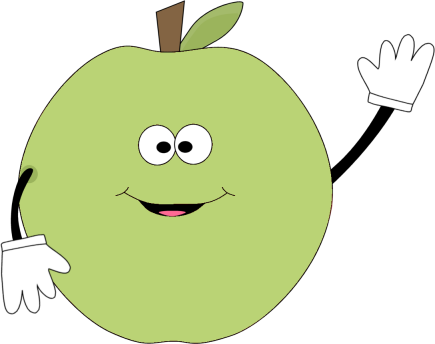Kids, for today’s science experiment, you will need:
- 1 or 2 apples
- A lemon (or lemon juice from a bottle)
- A knife (and the assistance of an adult)
Have you ever noticed that when you pack apples for your lunch or leave left over apple slices out from an after school snack, they sometimes turn a bit brown (or what I like to call: apple rust)? The reasoning behind this is that there are certain natural chemical properties (particularly polyphenol oxidase) in apples that react with the oxygen in the air that cause the hypanthium (the white part that we eat) to change in colour.
To begin the experiment, first get an adult to cut up 1 or 2 apples (depending on how many slices you would like to experiment on)—ask them to cut them into funky shapes, or re-arrange them into a smiley!
Next, you will separate your apple slices into two groups: one group will receive a “lemon juice treatment” and the other will not. Then, pick which group of slices you would like to give the lemon juice treatment to. All you need to do then is cut a few slices of lemon (with the assistance of an adult) or use the bottle of lemon juice to coat the chosen group of slices with a bit of lemon juice. Make sure that when you do this, you coat the hypanthium!
Lastly, you wait.
Discuss with others what you noticed.
Which group of apples turned brown and which group did not? OR Which group of apples turned brown the fastest?You will most likely see the group of apples (that did not receive the treatment) turn brown fairly quickly, while the other group did not.
Why this is:
- Remember those natural chemicals form the apple that reacted with oxygen? When you coat the apple with lemon juice, the oxygen in the air will first react with the acid from the juice and delay the browning of the actual fruit.
What to do next:
 Continue on the experiment, why stop here? You can test out different types of fruit—perhaps a pear! You can test out different types of acidic juices too.
Continue on the experiment, why stop here? You can test out different types of fruit—perhaps a pear! You can test out different types of acidic juices too.

